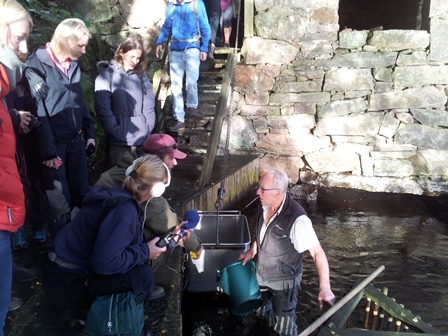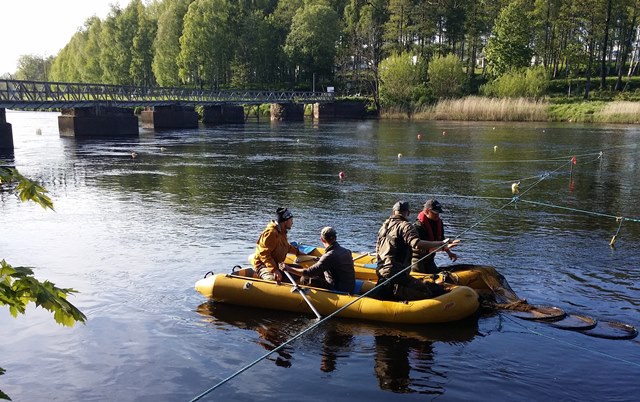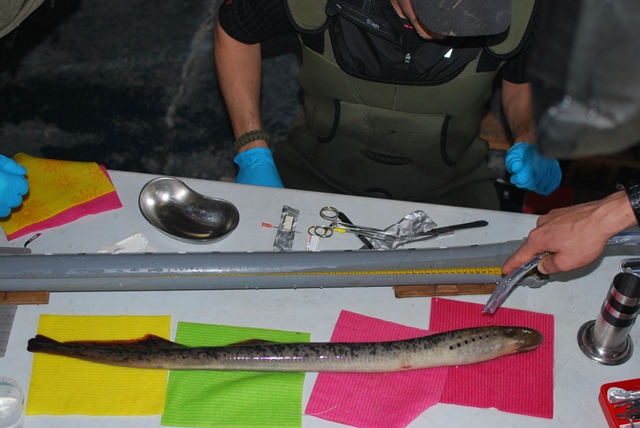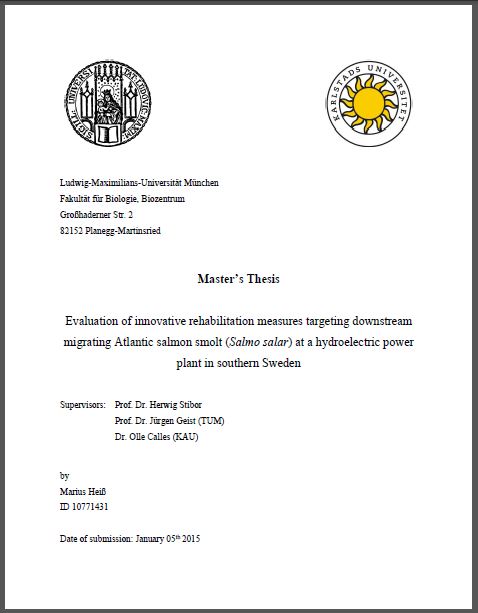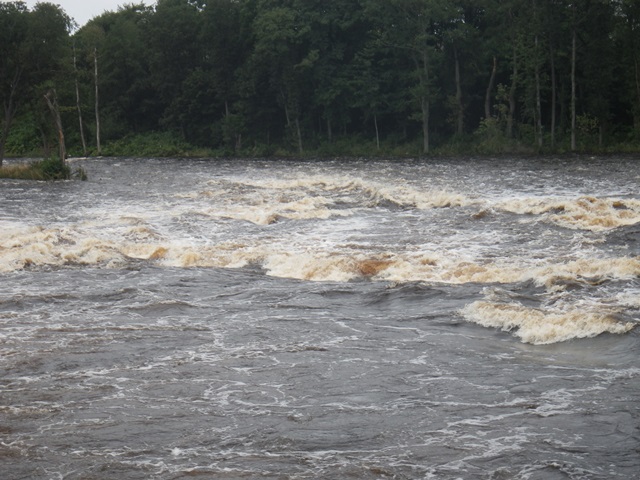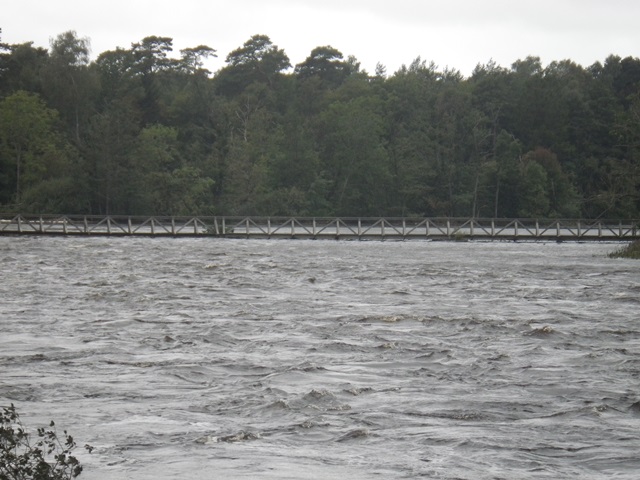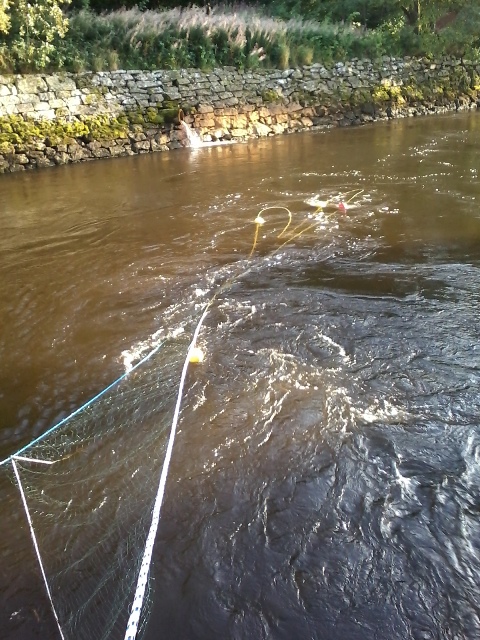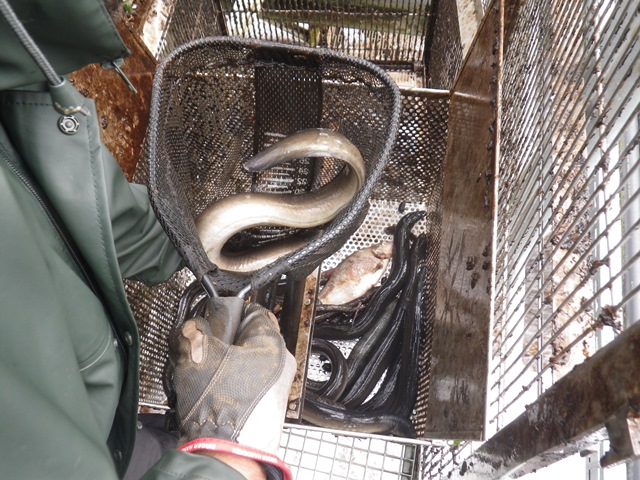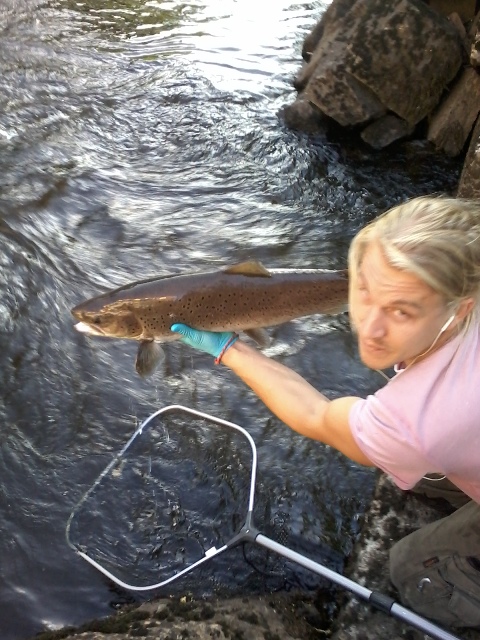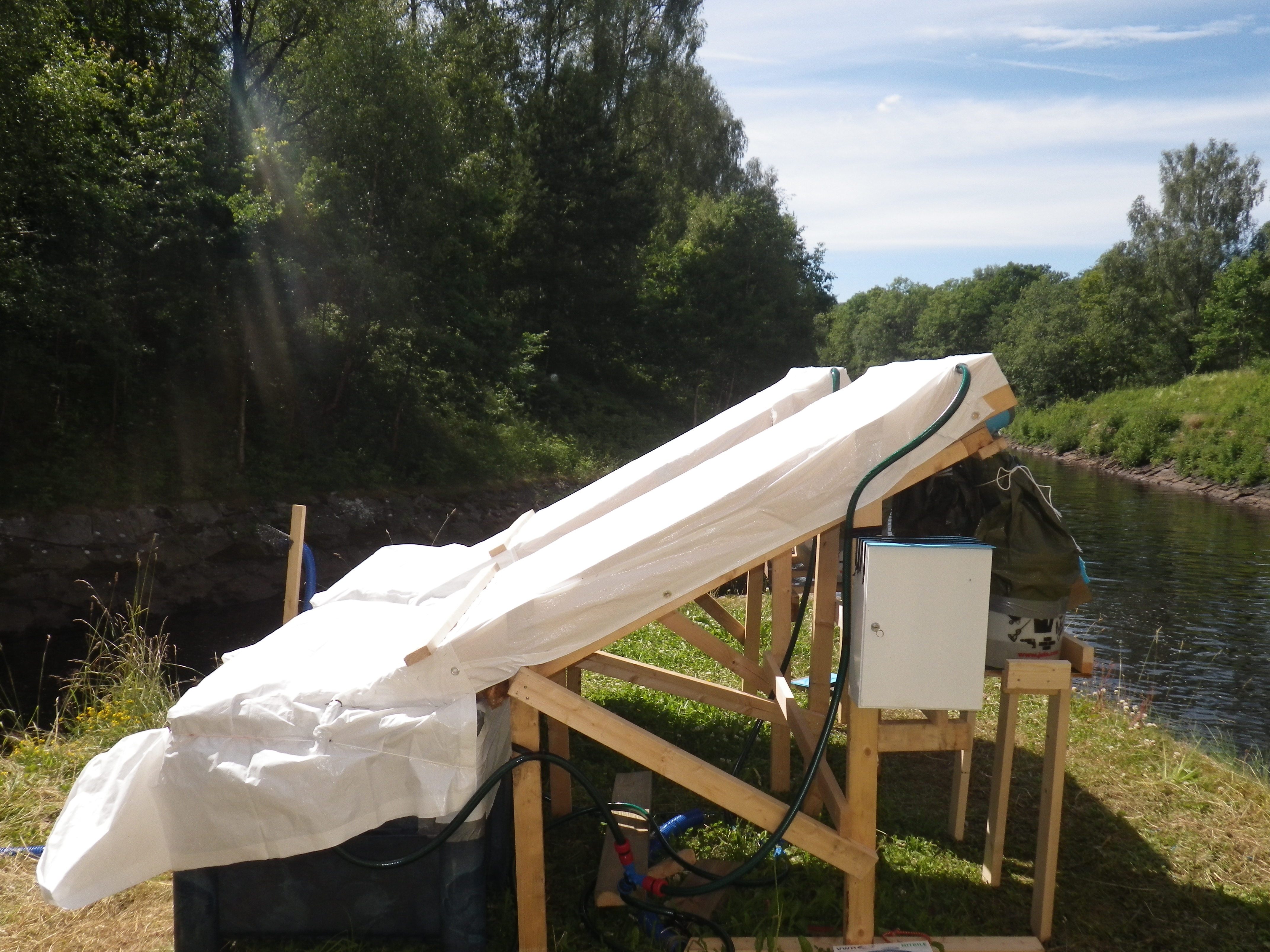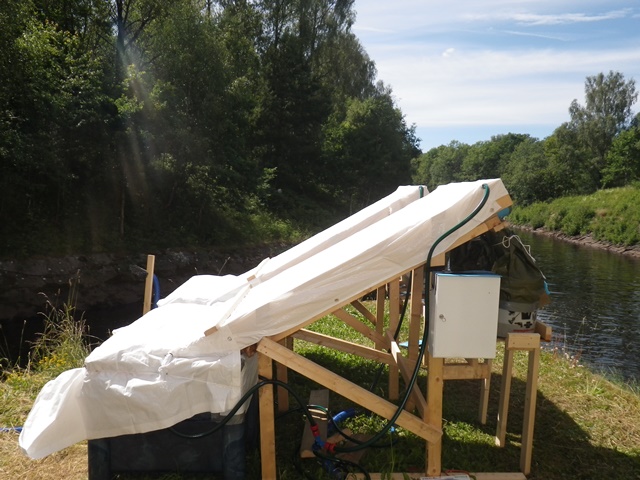Paper: Upstream and downstream passage of migrating adult Atlanticsalmon: Remedial measures improve passage performance at ahydropower dam
Posted by Daniel Nyqvist | Projekt Herting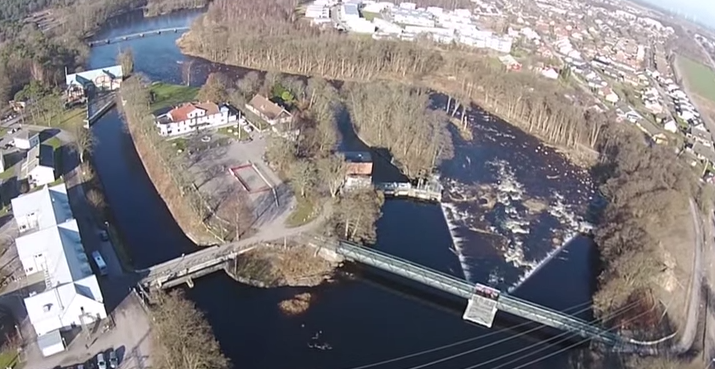
The Herting dam with the low sloping intake rack in the intake channel to the left and the large nature-like fishway to the right. (Photo from Fiskevårdstekniks film)
Recently, the paper “Upstream and downstream passage of migrating adult Atlantic salmon: Remedial measures improve passage performance at a hydropower dam” was published in the journal Ecological Engineering. The paper was authored by Daniel Nyqvist, Anders Nilsson, Ingemar Alenäs, Jonas Elghagen, Mats Hebrand, Simon Karlsson, Stefan Kläppe and Olle Calles. They summarize the paper: “Habitat connectivity is central for life-cycle progression for migrating organisms. Passage of hydropower dams is associated with mortality, delay, and migratory failure for migrating fish, and the need for remedial measures to facilitate passage is widely recognized. Lately, nature-like fishways have been promoted for upstream migrating fish, and low-sloping turbine intake racks for downstream migrating fish, but evaluations of these remedial measures are largely lacking. At Herting hydropower dam in southern Sweden, a technical fishway for upstream migrating salmonids, and a simple bypass entrance/trash gate for downstream migrating fish have been replaced by a large nature-like fishway for up and downstream migrating fish, and a low-sloping rack, guiding downstream migrating fish to the bypass entrance, has been installed. In this study, we evaluated these remedial measures for adult Atlantic salmon, spawners and kelts, in a before/after improved remedial measures radio telemetry study. Passage performance was improved for both up- and downstream migrating adult Atlantic salmon after remedial measures. Passage rate increased for fish migrating in both directions, and overall delay decreased while overall passage efficiency increased for upstream migrating fish. After the improved passage solutions almost all tagged fish passed the dam with very little delay. Before modifications, upstream passage performance through the technical fishway was higher at higher temperatures, at day compared to night, and for males compared to females. No such effects were observed for the after-measures nature-like fishway, indicating good passage performance for both sexes under a wide range of environmental conditions. Similarly, for downstream migrating kelts, discharge positively affected passage rate before but not after the fishway modifications. Altogether, our work demonstrates the possibility of coexistence between hydropower and Atlantic salmon in a regulated river.”



